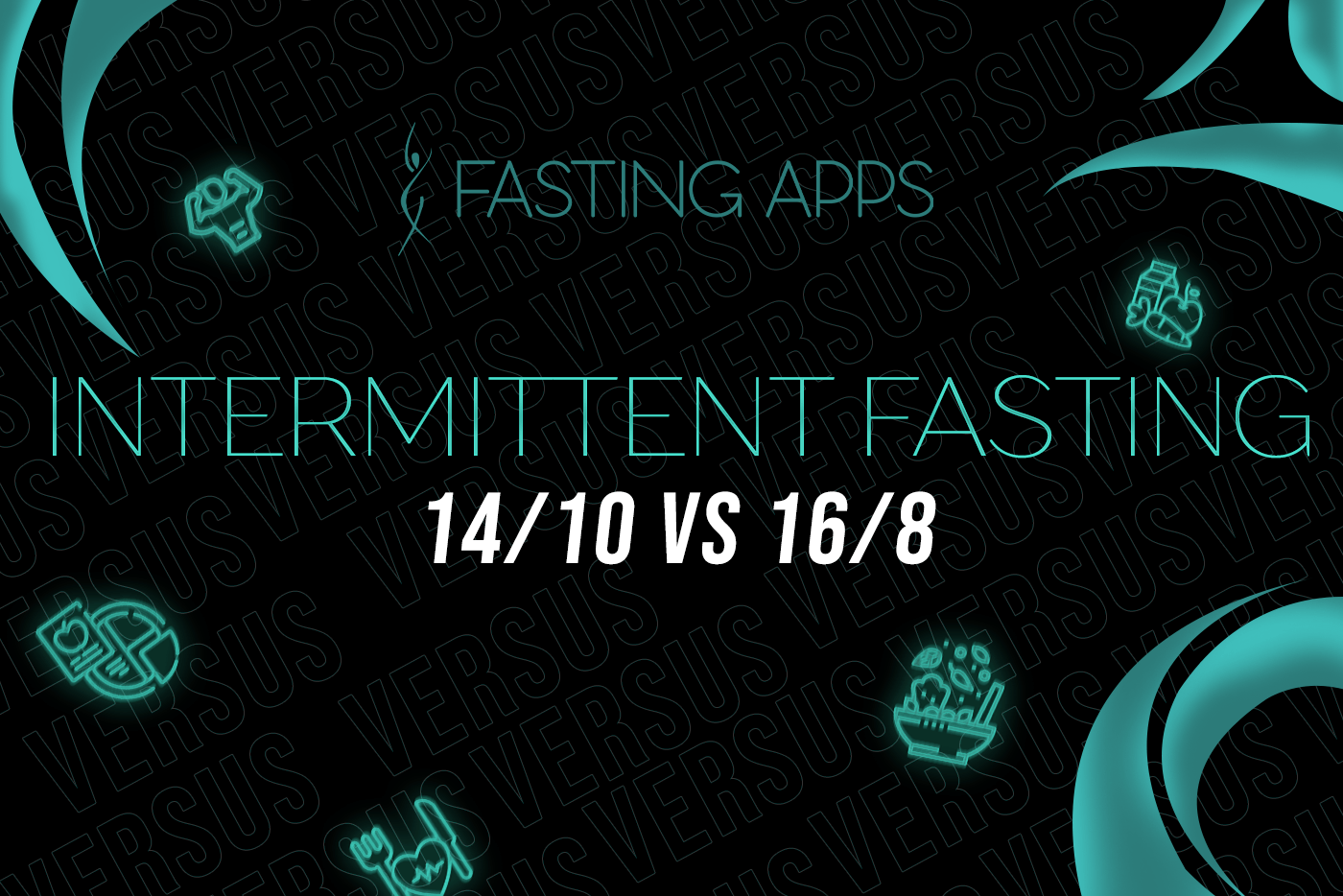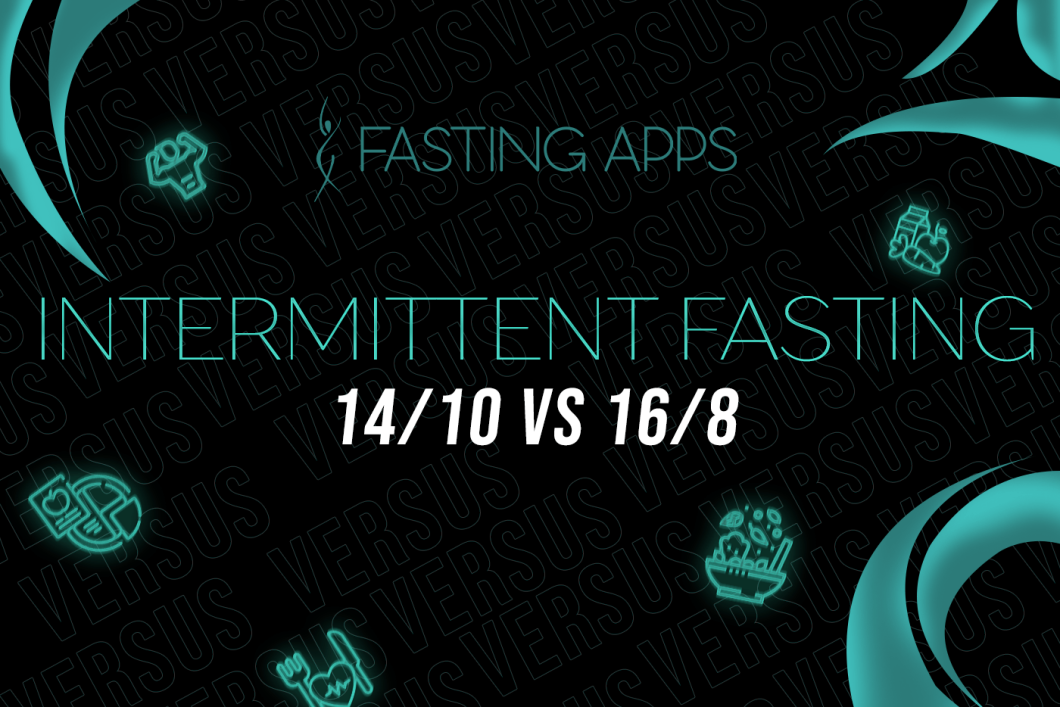Intermittent Fasting 14/10 Vs 16/8
Written by Andrew Brewer. ⚕️Reviewed and fact checked by our medical team.

As you get used to intermittent fasting, you start increasing your fasting times to help you get the most benefits. After all, the longer you fast, the more time your body will stay in autophagy and repair its cellular health. 14/10 is when you fast for 14 hours and eat for 10, which is a small increase from the 12/12 intermittent fast, which is a popular starting point. It’s the mid-point between 16/8 intermittent fasting and helps you transition.
Let’s explore the differences between these powerhouse intermittent fasting types so you can pick the best one for your lifestyle.
Key Takeaways
Intermittent fasting can have significant health benefits, including weight loss, lower blood sugar levels, improved cholesterol levels, and reduced risk of diseases like cancer, heart disease, and diabetes.
The fasting time is a crucial factor in choosing the right intermittent fasting plan for you. The 14/10 plan involves fasting for 14 hours and eating for 10 hours, while the 16/8 plan involves fasting for 16 hours and eating for 8 hours.
Autophagy, a cellular repair process, is triggered after at least 16 hours of fasting. Therefore, the 16/8 plan may be more effective in achieving the full benefits of intermittent fasting.
Choosing the right plan is a personal preference and depends on your lifestyle and goals. It is essential to consult with your healthcare provider before starting any new dietary plan.
Intermittent fasting is not a one-size-fits-all approach, and it may take some trial and error to find the plan that works best for you. Gradually increasing fasting times can be a good way to ease into the routine and adjust to the changes.
Benefits of 14/10 Intermittent Fasting
In 14/10 intermittent fasting, you will lose weight as your body begins to work through its calories to convert fat to energy. Studies also showed that there was a reduction in bad cholesterol levels and lowered blood pressure. Some participants reported sleeping better and feeling more energetic. The results you’ll see depend on how healthy you are, to begin with.
Those who are overweight may see more weight loss, lowered blood sugar, and more benefits up front, while those who are healthier may see results in different ways. It depends on how your body processes the available fat.
Benefits of 16/8 Intermittent Fasting
16/8 intermittent fasting is when your body starts to really get into the positive side effects. You see all the benefits of 14/10 and then some. 16/8 fasting can trigger autophagy, which is when your body starts to heal itself on a cellular level. It’s a great tool for disease prevention and some people who fast have seen a reduced risk of cancer, heart disease, diabetes, and more.
Your body starts to get into its optimal state in 16/8 intermittent fasting, boosted when you focus on improving your diet and exercise routines for a complete lifestyle shift.
What are the Differences?
Let’s compare how 14/10 and 16/8 stack up against each other so you can see which will work best for your needs.
Fasting time
Fasting time is a huge factor in choosing the right intermittent fasting plan for you. You can eat for 10 hours, and if you time it right, you can sleep for most of it on 14/10. Eat at 8 p.m., and then you can eat by 10 a.m. the next morning.
The same is true about 16:8 to a lesser extent. You can sleep for half of your fasting, and then you’ll be awake for the other half. It may be a shift to not get up and eat, but your body will adjust. Eat your last meal at 6 p.m., and then you’ll eat again at 10 a.m. the next day. When you plan, it makes fasting times much more manageable.
Autophagy
While you may enter the beginning stages of ketosis during 14/10, you won’t hit autophagy until fasting for at least 16 hours - this is the minimum. This is why the 16/8 fast is so popular. You can still eat every day, but you still get a lot of the benefits of longer-term fasting.
Remember, autophagy is the ideal state you want to hit. That’s when you’ll start to notice your body feeling healthier because it’s purging the dead and damaged cells and regenerating them with new ones. You may even look younger!
How to Choose?
Choosing the right intermittent fasting plan is a personal preference. Begin by identifying your goal and picking a plan that will help you achieve it. The shorter you fast, the more time it will take for you to see long-term benefits. Losing weight is a benefit of all intermittent fasting plans.
Our #1 Recommendation: DoFasting
It's easily one of the best fasting apps that offers plenty of features for anyone!
Use coupon code: 10app to get an extra 10% off all memberships.
FAQ
What is the 14/10 method of intermittent fasting?
The 14/10 method of intermittent fasting involves fasting for 14 hours and eating within a 10-hour window. For example, you might eat breakfast at 9 am and then stop eating at 7 pm.
What is the 16/8 method of intermittent fasting?
The 16/8 method of intermittent fasting involves fasting for 16 hours and eating within an 8-hour window. For example, you might eat breakfast at 12pm and then stop eating at 8 pm.

